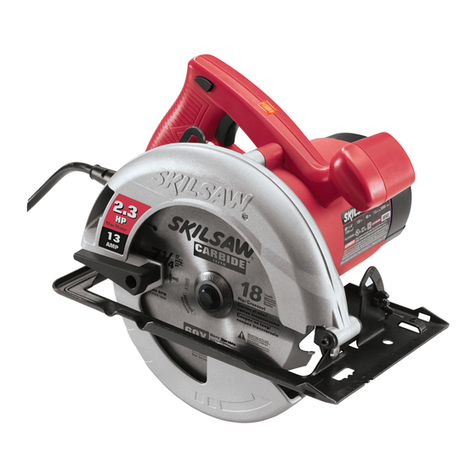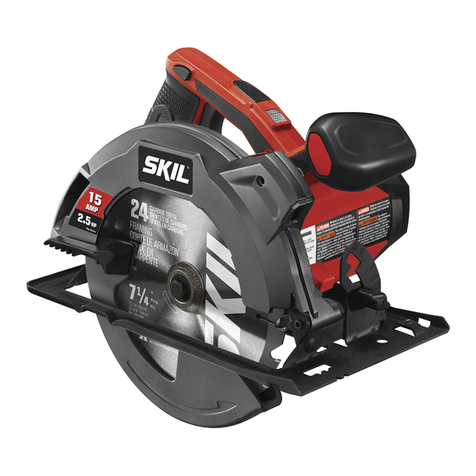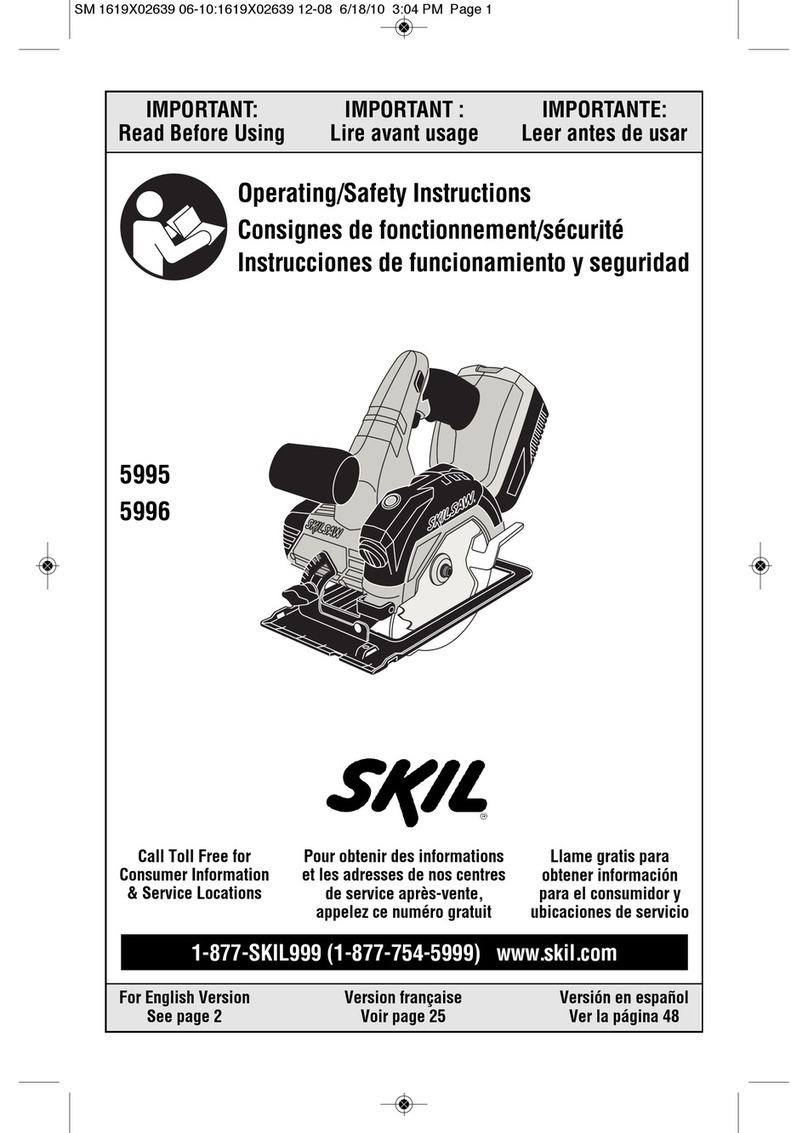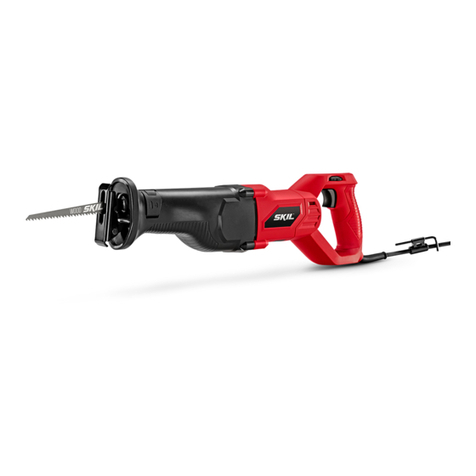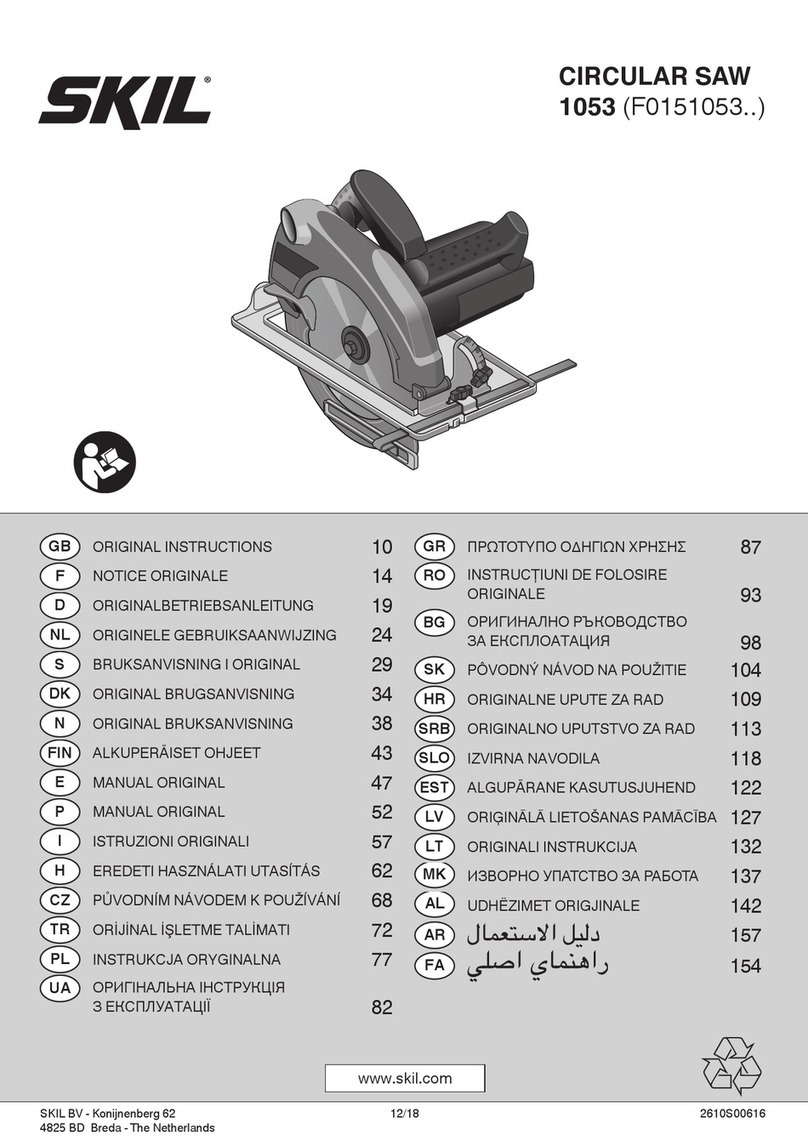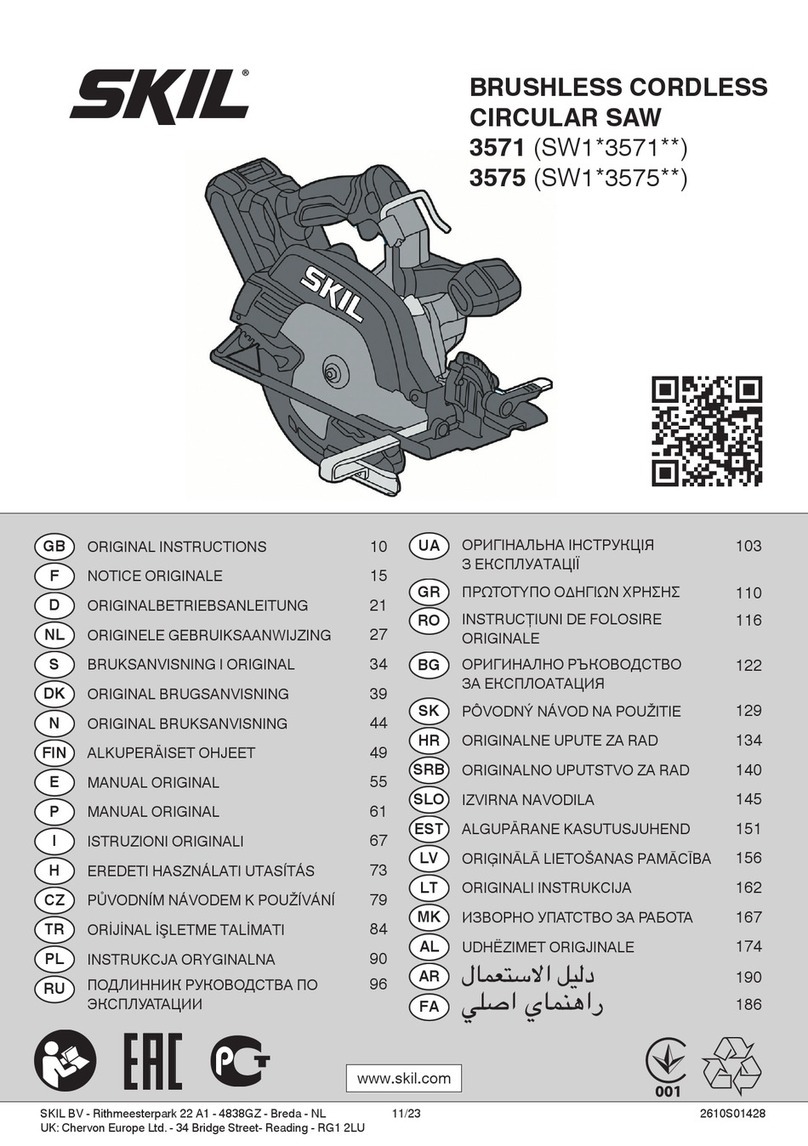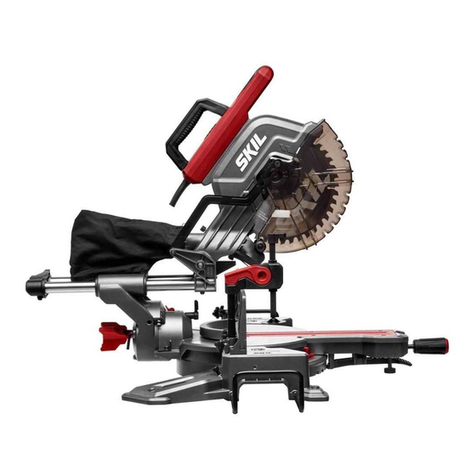10
d) Store idle power tools out of the reach of children
and do not allow persons unfamiliar with the power
tool or these instructions to operate the power tool.
Power tools are dangerous in the hands of
untrained users.
e) Maintain power tools. Check for misalignment or
binding of moving parts, breakage of parts and any
other condition that may affect the power tool’s
operation. If damaged, have the power tool repaired
before use. Many accidents are caused by poorly
maintained power tools.
f) Keep cutting tools sharp and clean.
Properly maintained cutting tools with sharp cutting
edges are less likely to bind and are easier to control.
g) Use the power tool, accessories and tool bits etc.,
in accordance with these instructions, taking into
account the working conditions and the work to be
performed. Use of the power tool for operations dierent
from those intended could result in a hazardous situation.
5) SERVICE
a) Have your power tool serviced by a qualified repair
person using only identical replacement parts.
This will ensure that the safety of the power tool
is maintained.
SAFETY INSTRUCTIONS FOR JIG SAWS
GENERAL
• Always check that the supply voltage is the same as the
voltage indicated on the nameplate of the tool (tools with
a rating of 230V or 240V can also be connected to
a 220V supply)
• Check the functioning of the tool before each use and, in
case of a defect, have it repaired immediately by a
qualied person; never open the tool yourself
• Do not work materials containing asbestos (asbestos
is considered carcinogenic)
• This tool should not be used by people under the age
of 16 years
• The noise level when working can exceed 85 dB(A);
wear ear protection
• Wear protective goggles when working with materials
which produce chips
• Dust from material such as paint containing lead, some
wood species, minerals and metal may be harmful
(contact with or inhalation of the dust may cause allergic
reactions and/or respiratory diseases to the operator or
bystanders); wear a dust mask and work with a dust
extraction device when connectable
• Certain kinds of dust are classied as carcinogenic
(such as oak and beech dust) especially in conjunction
with additives for wood conditioning; wear a dust
mask and work with a dust extraction device
when connectable
• Follow the dust-related national requirements for the
materials you want to work with
• Use completely unrolled and safe extension cords with
a capacity of 16 Amps (U.K. 13 Amps)
• Always disconnect plug from power source before
making any adjustment or changing any accessory
BEFORE USE
• Remove all obstacles on top of as well as underneath the
cutting path before you start cutting
• Avoid damage that can be caused by screws, nails and
other elements in your workpiece; remove them before
you start working
• Secure the workpiece (a workpiece clamped with clamping
devices or in a vice is held more securely than by hand)
DURING USE
• Hold power tool by insulated gripping surfaces,
when performing an operation where the cutting
accessory may contact hidden wiring or its own
cord (a cutting accessory contacting a “live” wire may
make exposed metal parts of the power tool “live” and
could give the operator an electric shock)
• When the plugged-in tool is not in use, the tool
handle may warm up; this is normal and does not
indicate a problem
• Always keep the cord away from moving parts of the tool;
direct the cord to the rear, away from the tool
• If the cord is damaged or cut through while working, do
not touch the cord, but immediately disconnect the plug
• Never use the tool when cord is damaged; have it
replaced by a qualied person
• In case of electrical or mechanical malfunction,
immediately switch o the tool and disconnect the plug
• Keep hands away from the saw blade while the tool is
in use
ACCESSORIES
• SKIL can assure awless functioning of the tool only
when original accessories are used
• Do not use a saw blade which is cracked, deformed
or dull
OUTDOOR USE
• When used outdoors, connect the tool via a fault current (FI)
circuit breaker with a triggering current of 30 mA maximum,
and only use an extension cord which is intended for outdoor
use and equipped with a splashproof coupling-socket
AFTER USE
• When you put away the tool, switch o the motor and
ensure that all moving parts have come to a
complete standstill
LASER RADIATION
• Do not look into the laser beam (laser radiation) 4
• Do not point the laser beam at persons or animals
• Do not use any magnifying optical tools (such as
magnifying glasses, telescopes, or binoculars) to view
the laser beam
• Do not operate the tool in the presence of ammable
liquids, gases or dust
• Do not operate the tool with children around
WHEN CONNECTING NEW 3-PIN PLUG (U.K. ONLY):
• Do not connect the blue (= neutral) or brown (= live) wire
in the cord of this tool to the earth terminal of the plug
• If for any reason the old plug is cut o the cord of this tool,
it must be disposed of safely and not left unattended
USE
• On/o 5
• Speed control for smooth starting 6
• Switch locking for continuous use 7
• Changing saw blades 8
! insert blade to full depth with teeth facing forward 9
! use T-shank blades only
• Sawing at 15°/30°/45° 0
